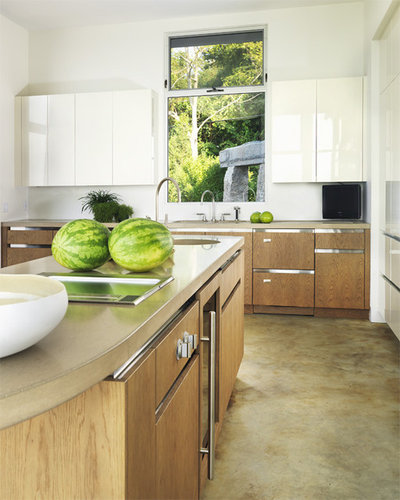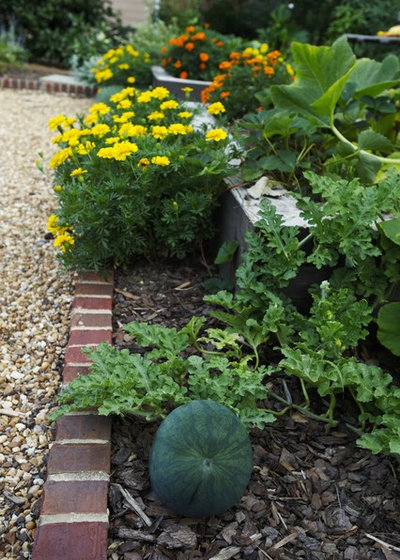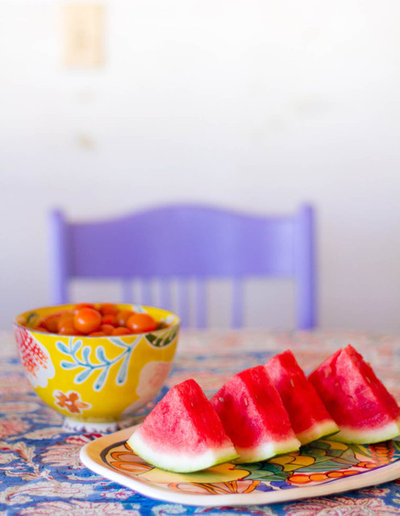Watermelon is the quintessential summer fruit. Though it's not in the same genus as other melons, its growing conditions are almost identical, just on a larger scale. Watermelons usually need even more space than melons — which can be a daunting thought. The good news is that the increasing number of varieties means you can find a watermelon that will work in your space. Check out seed catalogs and nurseries and you’ll discover seedless watermelons, “personal” watermelons just the right size for one person to eat, orange watermelons, bush watermelons, heritage watermelons — enough choices that you could devote a garden just to watermelons.
If you decide to have watermelons in your summer garden plan, know that in addition to possibly using a good portion of your garden space, you will need plenty of long, hot, sunny days and to wait two to three months to harvest.

Venegas and Company
When to plant: In spring, once all danger of frost has passed and the soil has reached 75 degrees Fahrenheit (24 degrees Celsius) — at least two weeks after the last frost date. Or start indoors about three weeks to one month before that date.
Days to maturity: 68 to 95
Light requirement: Full sun
Water requirement: Regular
Favorites: Bush Sugar Baby, Crimson Sweet, Glory, Ice Box, Moon and Stars, New Queen, Orange Crisp, Orange Sweet, Petite Treat, PureHeart Seedless, Rattlesnake, Ruby, Seedless, Sugar Baby, Sweet Beauty, White to Yellow Cut, Yellow Doll
Note: Seedless watermelons will need a seeded variety nearby to set fruit.

Troy Rhone Garden Design
Planting: Look for a warm spot in full sun with very rich, well-drained soil. Amend the soil with compost prior to planting. Provide plenty of room for the vines to stretch out; they can easily take up 100 square feet.
Plant in raised hills, the preferred method, or mounded rows surrounded by watering furrows or basins. Make hills 3 to 4 inches high and about 4 to 6 feet in diameter, setting them 8 feet apart. Rows should be 4 feet wide and 8 feet apart. Sow seeds 1 inch deep, with four or five seeds per hill or two seeds every foot along the row.
Thin to two plants per hill or one plant every 4 feet. Set out transplants at these distances as well. Put in any supports at this time.
If you don’t have a lot of space, consider growing a mini or compact type. These need as little as 2 to 4 feet of space and can even be grown in a large container. Follow the planting depth recommendations given above.
Care: Water deeply and regularly to keep the soil moist but not soaking wet; watering basins and furrows will keep water off the foliage and fruit, and prevent diseases.
Feed with a complete fertilizer every six weeks. Place a brick or piece of wood or foam under each fruit as it grows to keep it off the soil. If you’re growing watermelons on supports, use netting or stockings to create a sling to support them once the fruits reach about 2 inches.
Watermelons face many of the same pests and diseases as melons. Pests include aphids, cucumber beetles and squash vine borers. Row covers can protect seedlings; remove them when the plants flower. Mildew, rot and wilt may also be a problem.

Rikki Snyder
Harvest: Scholarly dissertations and humorous pieces alike have been written on how to tell when a watermelon is ripe. It’s important information; watermelons will not continue to ripen after they are picked.
The best way is to thump the melon and listen for the “thunk.” For added insurance, the tendrils near the stem should have begun to wither and turn dark, and the underside of the fruit should be changing to a yellowish color. Cut, don’t pull, the stem from the vine.
More: Guides to growing the top summer crops





